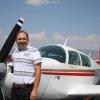Avgas Freezing
-
Members Online
- ta2too
- TangoTango
- Kelpro999
- ElkoRandy20J
- kortopates
- EKoS
- Rick Junkin
- Beechbum
- Danb
- Flyler
- srhalter
- takair
- WyattPilot
- VetRepp
- BaldEagle
- N911TP
- dzeleski
- emiliocastelli
- TheAv8r
- Vulcan81
- 47U
- TBILL
- jma201
- Vintagevalves
- richardbrochu27
- Falcon Man
- neilpilot
- exM20K
- TCC
- GMBrown
- varlajo
- James McDiarmid
- Guy123
- SKI


Recommended Posts
Join the conversation
You can post now and register later. If you have an account, sign in now to post with your account.